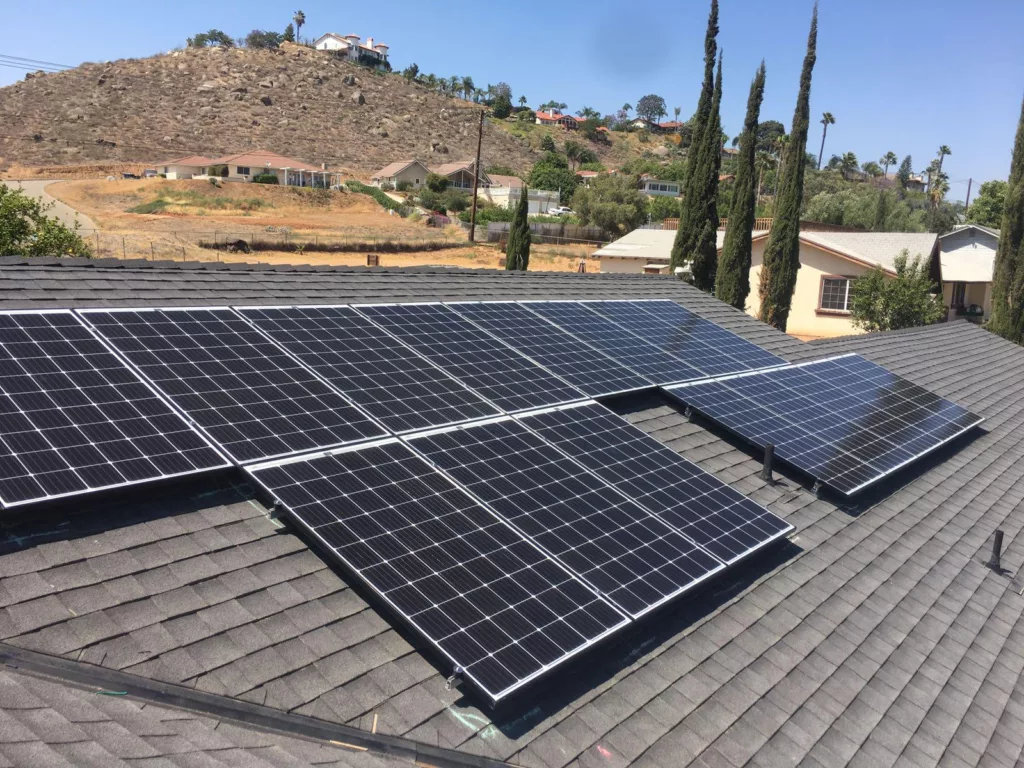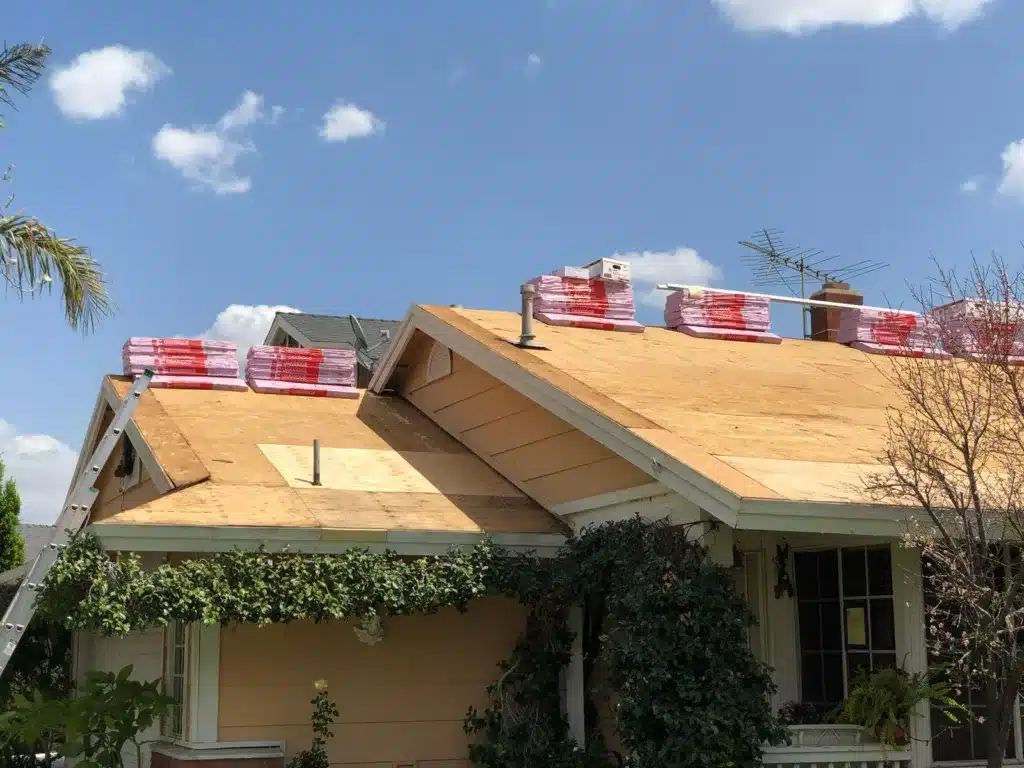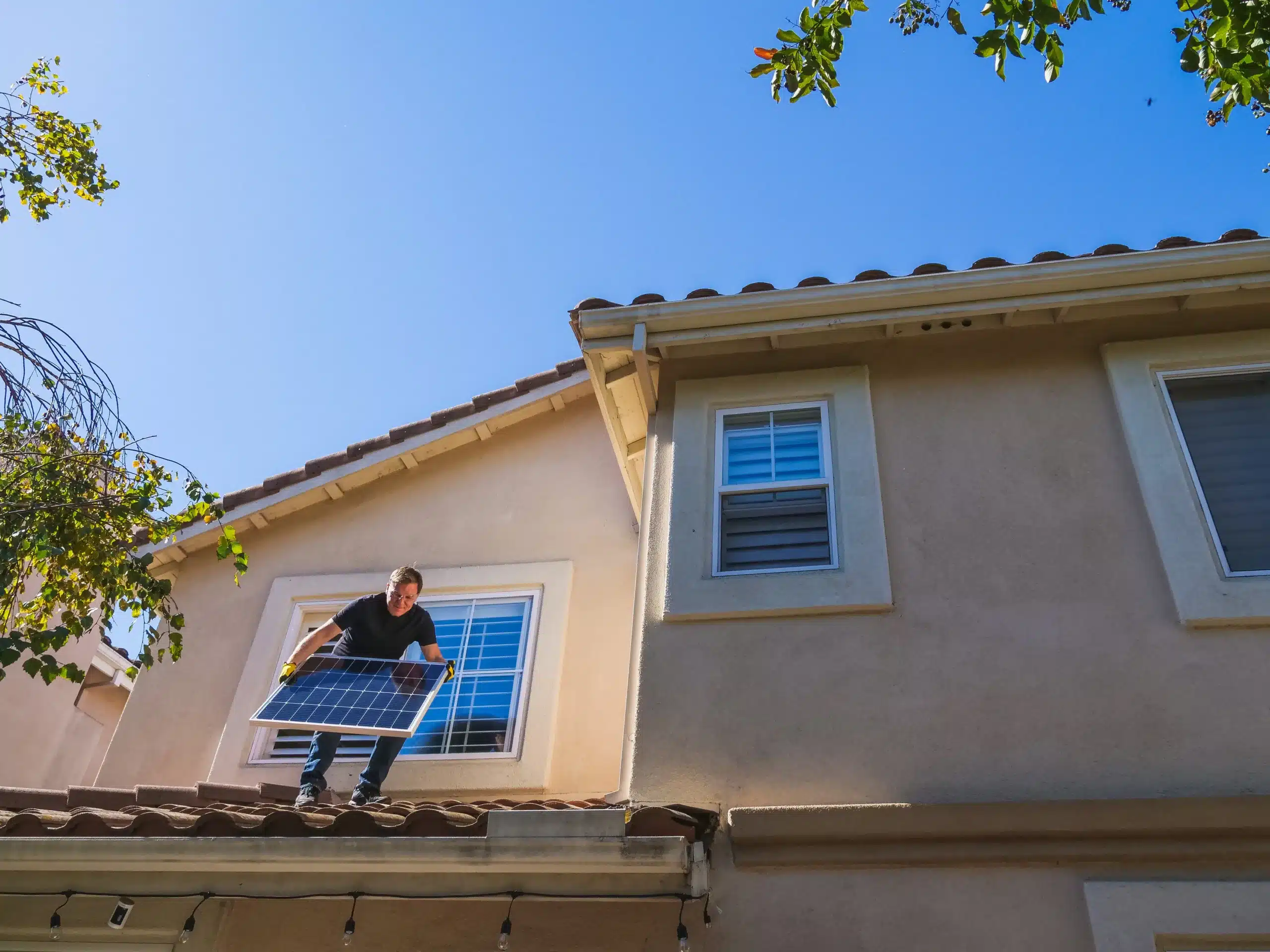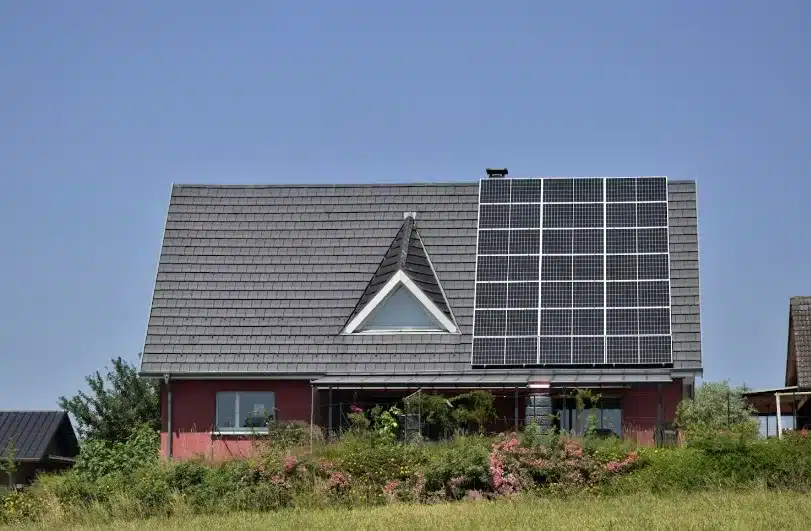The Climate-Smart Home: Strategies for Protection and Sustainability

In the face of escalating climate challenges, Southern California homeowners increasingly turn to climate-smart solutions for their homes. These adaptations protect against extreme weather conditions and offer a pathway to sustainability and energy efficiency. The push towards eco-friendly living reshapes the residential landscape from solar-powered energy systems to fire-resistant building materials. This article delves into the strategies and innovations that make Southern California homes both environmentally resilient and future-ready.
Climate-Smart Homes Versus Green Homes
Climate-smart homes represent a progressive approach to sustainable living that goes beyond the concept of green homes. While green homes primarily focus on minimizing environmental impact through energy efficiency, renewable energy, and eco-friendly materials, climate-smart homes extend their scope to adaptability and resilience in the face of changing climate conditions.
These homes integrate advanced technologies and design strategies to withstand extreme weather events, rising temperatures, and other climate-related challenges. The emphasis is on reducing the ecological footprint and preparing for and mitigating the impacts of a shifting climate. Climate-smart homes prioritize a holistic and proactive approach to ensure long-term sustainability and resilience, taking into account the broader climate context in their design and functionality.
Building a Climate-Resilient Foundation
The smartest climate tech for your home will be worthless if you don’t have a solid foundation on which everything is built. Your house’s literal and metaphorical foundations must be well-designed and climate-resilient to lay the groundwork for your ideal climate-smart home.
Ensuring your home has a solid foundation minimizes overall ownership costs. This involves elements like proper insulation and reinforced, weather-resistant structures. A dedicated foundation not only reduces expenses but also prevents energy wastage. Cracks in the foundation can lead to energy inefficiency, which is costly for the homeowner and detrimental to the surrounding environment. A home unprepared for challenging weather conditions is susceptible to unforeseen expenses and financial waste. To address this, let’s explore strategies for building a climate-resilient home.
Assessing Home Vulnerability
Begin by evaluating how your home currently handles various weather conditions. Consider past experiences with storms, extreme temperatures, or other environmental stressors. Take note of any vulnerabilities or areas where your home may have exhibited weaknesses. This initial understanding forms the basis for targeted enhancements.
Pinpoint specific areas that may need improvement to bolster your home’s resilience. This could include inspecting the integrity of your roof, windows, doors, and foundation. Look for signs of wear, potential points of water entry, or structural vulnerabilities. A comprehensive examination allows you to prioritize areas in need of attention.
Engage with home-building experts or professionals specializing in climate resilience. Seek their insights on your home’s vulnerabilities and potential improvements. Their expertise can provide valuable guidance on structural enhancements, material choices, and sustainable solutions. Collaborating with professionals ensures a comprehensive evaluation and a well-informed strategy for climate-proofing your home.
Reinforcing Structures Against Extreme Weather
Once you’ve assessed your home’s vulnerability, the next pivotal step in building a climate-resilient foundation is reinforcing structures to withstand extreme weather conditions. Opt for durable and weather-resistant building materials when constructing or renovating your home. Materials with high resilience to environmental stressors, such as impact-resistant windows and robust siding, enhance your home’s ability to endure extreme weather. Thoughtful material choices form a crucial part of the defense against climatic challenges.
The roof and foundation are key components in protecting your home from extreme weather. Ensure your roof is equipped to handle wind, rain, and potential debris. Invest in quality roofing materials and consider reinforcement techniques to prevent damage. Similarly, reinforce foundational structures to withstand the impact of storms, floods, or earthquakes, depending on your location.
Implement a routine maintenance schedule and conduct regular inspections to promptly identify and address potential vulnerabilities. Check for signs of wear and tear, leaks, or structural issues. Regular maintenance not only preserves the integrity of your home but also allows for timely repairs, preventing minor issues from growing into costly problems.
By prioritizing durable materials, upgrading critical structures, and maintaining a vigilant inspection routine, you contribute significantly to the resilience of your home against extreme weather conditions. The proactive reinforcement of these elements complements the foundation assessment, forming a comprehensive strategy for building a climate-resilient home.
Investing in Sustainable Energy
Establishing a foundation resilient to climate change is closely connected with embracing sustainable energy practices. The integration of renewable energy sources not only minimizes your environmental footprint but also boosts the overall sustainability of your residence.
Consider renewable energy sources like solar panels to generate clean energy. Embrace renewable energy sources like wind or hydropower to diversify your energy supply further. These initiatives contribute to environmental conservation and offer long-term savings by minimizing dependence on traditional energy grids.
Complement your renewable energy efforts with home battery storage systems. These systems enable you to store excess energy generated during peak times for later use, providing a reliable power source during outages or when renewable sources are less productive. Home battery storage enhances energy independence and resilience, creating a more sustainable and climate-resilient home.
Incorporate smart energy management systems to optimize energy usage within your home. Utilizing smart thermostats, lighting controls, and energy-efficient appliances provides precise command over energy usage. By harnessing technology for efficient energy management, you not only diminish your carbon footprint but also fortify the overall resilience of your home in response to evolving climate conditions.
Adapting to Extreme Weather: Protection Strategies

Given the unpredictable nature of weather, preparing for the unexpected is crucial. Whether it’s an unforeseen storm or the threat of fire damage in Southern California during the dry season, safeguarding your home is a priority for any homeowner. To mitigate potential risks, it’s essential to have proper storm protection and be well-prepared.
There are many effective weatherproofing solutions, ranging from hurricane-proof siding to flood-resistant landscaping. With the constant risk of extreme weather, proactive measures are invaluable. By investing in protection-focused renovations, you not only enhance the resilience of your home but also safeguard against potential losses in the face of unpredictable weather events.
Flood and Water Damage Prevention
Protecting your home against floods and water damage is paramount in adapting to extreme weather. Implementing preventive measures against flooding can significantly reduce the risk of potential harm.
Much of the protection of your home starts with the surrounding landscape. Craft a landscaping plan that directs water away from your home to prevent flooding and water damage. Sloping the terrain away from the foundation and installing drainage systems, such as gutters and downspouts, prevents water accumulation around your property. Thoughtful landscaping and drainage solutions help mitigate the risk of flooding during heavy rainfall.
Consider installing sump pumps in vulnerable areas to pump out excess water and prevent flooding in basements or lower levels. Additionally, deploy flood barriers around entry points like doors and windows to create a barrier against rising water levels. These proactive measures act as a first line of defense, minimizing the potential impact of flooding.
Waterproofing basements and lower levels is crucial for preventing water intrusion. Administer sealants to walls, ensure proper installation of floors, and verify that windows and doors are appropriately sealed. This supplementary protective measure acts as a barrier against water seepage, safeguarding the structural integrity of your home and reducing the potential for water-related damage.
Safeguarding Against Wildfires
Protecting your home from the threat of wildfires requires strategic planning and proactive measures. Consider the following key strategies to safeguard against wildfires:
Fire-Resistant Materials and Design Choices: Opt for building materials with high fire resistance for your home’s exterior, proper roofing, and deck. Choose designs that minimize the risk of embers infiltrating your property.
Creating Defensible Space and Reducing Fire Risks: Establish a defensible space around your home by clearing combustible vegetation and maintaining a safe distance between trees and structures. Regularly prune and maintain landscaping to reduce fuel for potential fires.
Importance of Smoke Detectors and Fire Suppression Systems: Install smoke detectors in key areas of your home, particularly in bedrooms and shared spaces. Additionally, invest in fire suppression systems, such as sprinklers, to provide an immediate response in the event of a wildfire threat.
By incorporating these strategies, you enhance your home’s resilience to wildfire risks and contribute to the overall safety of your property.
Preparing for Storms and High Winds
Ensuring your home is ready for storms and high winds involves practical renovations and reinforcements. Strengthen windows and doors using impact-resistant materials and storm shutters. This shields your home from wind-driven rain and debris. Secure outdoor structures and trim trees to minimize potential hazards during high winds.
Prepare for power outages with a stocked emergency kit containing essentials like non-perishable food, water, flashlights, and batteries. Establish a family emergency plan, identify shelter areas, and stay informed about local evacuation routes. These measures fortify your home against storms, promoting both property protection and the safety of your household during adverse weather conditions.
Reducing Environmental Impact at Home

Advancements in smart-home technology and sustainability features have made it possible to contribute to environmental protection right from the comfort of your home. Whether adopting clean energy sources or integrating smart technologies to reduce your home’s carbon footprint, there are numerous ways to influence your environmental impact positively.
While the upfront costs of reducing energy usage and incorporating green technology may seem significant, the long-term savings make it a worthwhile investment.
H3: Implementing Energy Conservation Methods
Opt for appliances boasting high energy efficiency, such as ENERGY STAR-certified products. Illuminate your space with LED or CFL bulbs, known for their reduced energy consumption and extended lifespan. By choosing these options, you contribute to environmental conservation and benefit from long-term energy savings.
Enhance your home’s insulation to regulate indoor temperatures effectively, minimizing the reliance on heating or cooling systems. Upgrade windows to double-pane or energy-efficient models, mitigating heat transfer and fortifying overall insulation. Integrate smart thermostats into your home infrastructure, offering precise control over temperature settings. Program these devices to adapt to your schedule, avoiding unnecessary energy consumption during idle periods.
By embracing energy-efficient appliances, upgrading insulation and windows, and adopting smart thermostats, you actively contribute to a sustainable home. These methods align with environmental goals and pave the way for substantial long-term savings on your energy bills.
H3: Embracing Renewable and Clean Energy
Transitioning to renewable and clean energy sources is pivotal in reducing your environmental impact. Consider the following strategies:
Utilize solar panels to turn solar power into cost-efficient energy for your home. Explore wind energy options, especially in areas with consistent wind patterns. Additionally, consider geothermal systems for heating and cooling.
Engage in community-driven renewable energy initiatives advocating for the adoption of clean energy sources. Leverage governmental incentives and rebates to endorse the deployment of renewable energy technologies.
Embrace a low-carbon emissions lifestyle by reducing energy consumption, using public transportation, and incorporating eco-friendly practices into your daily routine. Support sustainable initiatives that contribute to a broader transition to clean energy.
By exploring solar, wind, and geothermal options, engaging in community-based programs, and adopting a low-carbon lifestyle, you can benefit the environment and participate proactively in the global movement toward sustainable energy practices.
H3: Sustainable Landscaping and Gardening
Creating a sustainable outdoor space involves mindful choices and eco-friendly practices. Opt for drought-tolerant and native plant choices in your garden, as these plants are brought to the local climate, requiring less water and maintenance. Additionally, they contribute to the local ecosystem by providing habitat and sustenance for native wildlife.
To further enhance sustainability, implement efficient watering systems to decrease water waste. Explore rainwater collection to gather and store rainwater for later use in your garden. This conserves water and reduces your reliance on traditional water sources.
Embrace composting and organic gardening practices to nurture your soil naturally, enriching it with nutrients for healthier plant growth. Organic alternatives to pesticides and fertilizers support a more sustainable and environmentally friendly garden. By incorporating these practices, you create a visually appealing outdoor space and contribute to environmental conservation, fostering a good relationship between your living space and the natural world.
H2: Tailoring Climate Strategies for Southern California

Different regions experience distinct weather patterns, leading to specific home protection requirements. What’s necessary for a home on the East Coast to withstand local weather conditions differs from the needs of a Southern California home. Southern California, in particular, has witnessed significant shifts in its climate, including frequent storms causing flooding, seasonal wildfires wreaking havoc on local residences, and the constant threat of earthquakes.
While regional policies have made sustainability efforts more accessible, safeguarding your home in the face of these challenges remains a complex task. In this section, we’ll delve into localized weather threats and discuss protection plans you can implement to ensure your home is resilient against climate change. By examining various regions across Southern California, we aim to assist you in planning your next home renovation, incorporating tailored safety and sustainability features based on the unique conditions of where you live.
Navigating Climate Challenges in Los Angeles
Addressing climate challenges in Los Angeles requires a tailored approach to mitigate the unique environmental factors prevalent in the region. Consider the following strategies to navigate these challenges effectively:
Addressing Urban Heat Island Effects: Combat the urban heat island effect by incorporating green infrastructure, such as green roofs and tree-lined streets, to provide shade and reduce surface temperatures. Implement cool pavement technologies to minimize heat absorption and create a more climate-resilient urban environment.
Water Conservation in a Drought-Prone Area: Given the region’s susceptibility to drought, prioritize water conservation efforts. Install water-efficient appliances, adopt drought-tolerant landscaping, and explore rainwater harvesting methods to maximize water sustainability. Public awareness can also be vital in promoting responsible water usage.
Building for Earthquake and Wildfire Resilience: Design and construct buildings with earthquake resilience in mind, adhering to the latest seismic codes and standards. Additionally, implement wildfire-resistant landscaping practices, create defensible spaces around properties, and employ building materials with enhanced fire resistance to safeguard against the dual threat of earthquakes and wildfires.
By addressing urban heat island effects, emphasizing water conservation, and prioritizing earthquake and wildfire resilience, Los Angeles can proactively navigate the unique challenges posed by its climate. These strategies contribute to the city’s environmental sustainability and enhance the overall resilience of its infrastructure and communities.
Orange County’s Approach to Climate Adaptation
Orange County’s response to climate change involves a multifaceted approach that addresses the specific challenges and opportunities presented by its coastal environment. Strategies to mitigate the impacts of climate change in the region include:
Coastal erosion and sea level rise strategies are essential considerations for Orange County. Implementing shoreline protection measures, such as beach nourishment and the restoration of natural buffers, helps combat coastal erosion. Additionally, planning for sea level rise involves assessing vulnerable areas and adopting adaptive strategies to protect coastal communities.
Sustainable urban development and the creation of green spaces play a pivotal role in Orange County’s climate resilience efforts. By integrating eco-friendly design principles into urban planning, the county aims to reduce the urban heat island effect and enhance overall environmental sustainability. The promotion of green spaces not only provides recreational areas for residents but also contributes to biodiversity and climate resilience.
Community initiatives for climate resilience empower Orange County residents to actively participate in adapting to and mitigating the impacts of climate change. Outreach programs, educational campaigns, and collaborative efforts foster a sense of community engagement and preparedness. Encouraging sustainable practices at the grassroots level contributes to a collective response to climate challenges, making Orange County more resilient in the face of a changing climate.
Regional Considerations for Energy and Water Use
Optimizing energy and water use in Southern California involves strategic considerations that align with the region’s unique characteristics. Utilize Southern California’s abundant solar potential by promoting the widespread adoption of solar energy systems. Harnessing sunlight for power reduces reliance on traditional energy sources and contributes to the region’s sustainability goals.
Implement water-saving technologies tailored to the challenges of a desert climate. These technologies, from efficient irrigation systems to smart water management, help conserve water resources in drought-prone regions. Take advantage of regional policies and incentives that promote sustainability. Government initiatives and incentives can encourage businesses and residents to adopt eco-friendly practices, fostering a more environmentally conscious and resilient Southern California.
Southern California can enhance its energy and water sustainability by leveraging solar potential, embracing water-saving technologies, and aligning with regional policies, contributing to a more resilient and environmentally conscious future.
Future-Proofing Your Home: Long-Term Climate Adaptation

As the climate changes, the safeguards necessary to keep your house secure in the face of extreme weather patterns and evolving climate conditions must also adapt. Establishing a durable protection plan for your home involves dedicated utility remodeling and foundational renovation projects, ensuring its resilience over the years.
Transitioning to green energy and curbing overall energy consumption are pivotal steps toward creating a sustainable and resilient home for the future. Dedicated kitchen remodels, and bathroom improvements with smart-tech and sustainability features can help reduce your overall carbon footprint. Here are some ideas to guide you in building your dream home, fostering sustainability, and fortifying your residence against the potential threats posed by extreme weather and unpredictable storms.
Planning for Climate Change Impacts
Utilize future climate projections specific to your region to tailor adaptation strategies. Stay informed about expected changes in temperature, precipitation patterns, and extreme weather events, allowing you to address evolving challenges proactively.
Make long-term investments in your home’s resilience, considering elevated flood defenses, enhanced insulation, and durable roofing materials. Prioritize upgrades that prepare your home for the anticipated climate conditions in the coming years.
Engage with community and government resources for a collaborative approach. Participate in local climate resilience programs, utilize available resources for home assessments, and stay informed about government initiatives supporting long-term climate adaptation. Networking with neighbors and community organizations provides valuable insights and resources for a collective response.
By combining climate projections, long-term investments, and community engagement, you fortify your home against climate change and contribute to the broader goal of building resilient communities.
The Role of Technology in Climate Adaptation
Embrace advanced home automation to optimize efficiency: Smart thermostats, energy-efficient appliances, and automated lighting systems contribute to reduced energy consumption, aligning with climate-conscious living.
Leverage technology for real-time monitoring and alerts: Smart sensors can detect changes in environmental conditions, providing early warnings for potential risks such as floods or extreme temperature fluctuations. This proactive approach empowers homeowners to respond swiftly to emerging threats.
Witness the evolution of smart, climate-adaptive homes: Integrated systems can learn and adjust based on weather patterns, ensuring optimal energy use and comfort. These innovations, from self-regulating heating and cooling to automated irrigation systems, contribute to homes that seamlessly adapt to changing climates.
By harnessing the power of technology in home automation, monitoring, and climate adaptation, homeowners can enhance their living spaces and actively contribute to a more sustainable and resilient future.
Cultivating Community and Environmental Stewardship
Cultivating a sense of community and environmental stewardship is integral to fostering long-term climate adaptation. Homeowners can play a pivotal role in this collective effort by promoting neighborhood sustainability initiatives. Initiatives like community gardens, recycling programs, and energy-saving challenges contribute to a more eco-friendly neighborhood and strengthen residents’ bonds.
Active participation in local environmental groups further amplifies the impact of individual efforts. Joining forces with like-minded community members allows for shared resources, knowledge exchange, and the implementation of large-scale projects that enhance overall environmental resilience. Local initiatives may include tree planting campaigns, cleanup drives, or advocacy for sustainable urban planning.
Education becomes a powerful tool in inspiring others toward collective action. Homeowners can host workshops, share resources, and advocate for sustainable practices within their communities. By fostering a culture of environmental awareness, homeowners contribute to a shared commitment to long-term climate adaptation and create a ripple effect of positive change beyond individual homes.
In cultivating community and environmental stewardship, homeowners enhance the sustainability of their immediate surroundings and contribute to a broader movement for a resilient and environmentally conscious future.
A multifaceted approach is essential in creating climate-smart homes to address the diverse challenges a changing environment poses. From building a resilient foundation and safeguarding against extreme weather to adopting sustainable energy practices and reducing environmental impact, homeowners can actively contribute to a more resilient and sustainable future. Tailoring strategies to regional considerations, leveraging technology for adaptation, and fostering community and environmental stewardship further amplify the collective impact.
By embracing these principles, homeowners not only fortify their homes against the challenges of today but also lay the groundwork for a resilient and harmonious coexistence with the environment in the years to come.
FAQs About Building Climate-Conscious Homes in Southern California
What are the key features of a climate-smart home in Southern California?
Climate-smart homes in Southern California typically include solar panels, drought-resistant landscaping, and energy-efficient windows and insulation to combat the region’s hot, dry climate and reduce energy consumption.
How can homeowners in Southern California effectively protect their homes from wildfires?
Homeowners can protect their homes from wildfires by using fire-resistant materials for roofing and siding and creating a defensible space around their property that is free of flammable materials.
What are some water conservation strategies for homes in this region?
Implementing low-flow water fixtures and adopting xeriscaping, which involves using drought-tolerant plants, are effective water conservation strategies for Southern California homes.
Are solar panels a cost-effective option in Southern California?
Yes, solar panels are a cost-effective option in Southern California due to the region’s high number of sunny days, allowing maximum solar energy generation.
How can new construction in Southern California be optimized for climate change?
New constructions can be optimized for climate change by incorporating energy-efficient designs, using sustainable building materials, and planning for adequate ventilation and natural cooling.
What role does insulation play in making a home climate-smart in this region?
Proper insulation in Southern California homes is crucial for maintaining comfortable indoor temperatures and reducing the need for air conditioning, thereby saving energy.
How important is landscaping in the design of a climate-smart home in Southern California?
Landscaping is essential; using native and drought-resistant plants minimizes water usage and maintenance while providing natural cooling effects.
Can older homes in Southern California be retrofitted to be more climate-smart?
Yes, older homes can be retrofitted with energy-efficient windows, insulation, solar panels, and updated to water-efficient plumbing fixtures to become more climate-smart.
What are some incentives for building a climate-smart home in Southern California?
There are various incentives, including tax credits, rebates for installing solar panels and energy-efficient appliances, and possible discounts on home insurance.
How does building a climate-smart home impact the long-term value of a property in Southern California?
Building a climate-smart home can significantly increase a property’s long-term value by reducing future maintenance costs, improving energy efficiency, and meeting the growing demand for sustainable living spaces.
